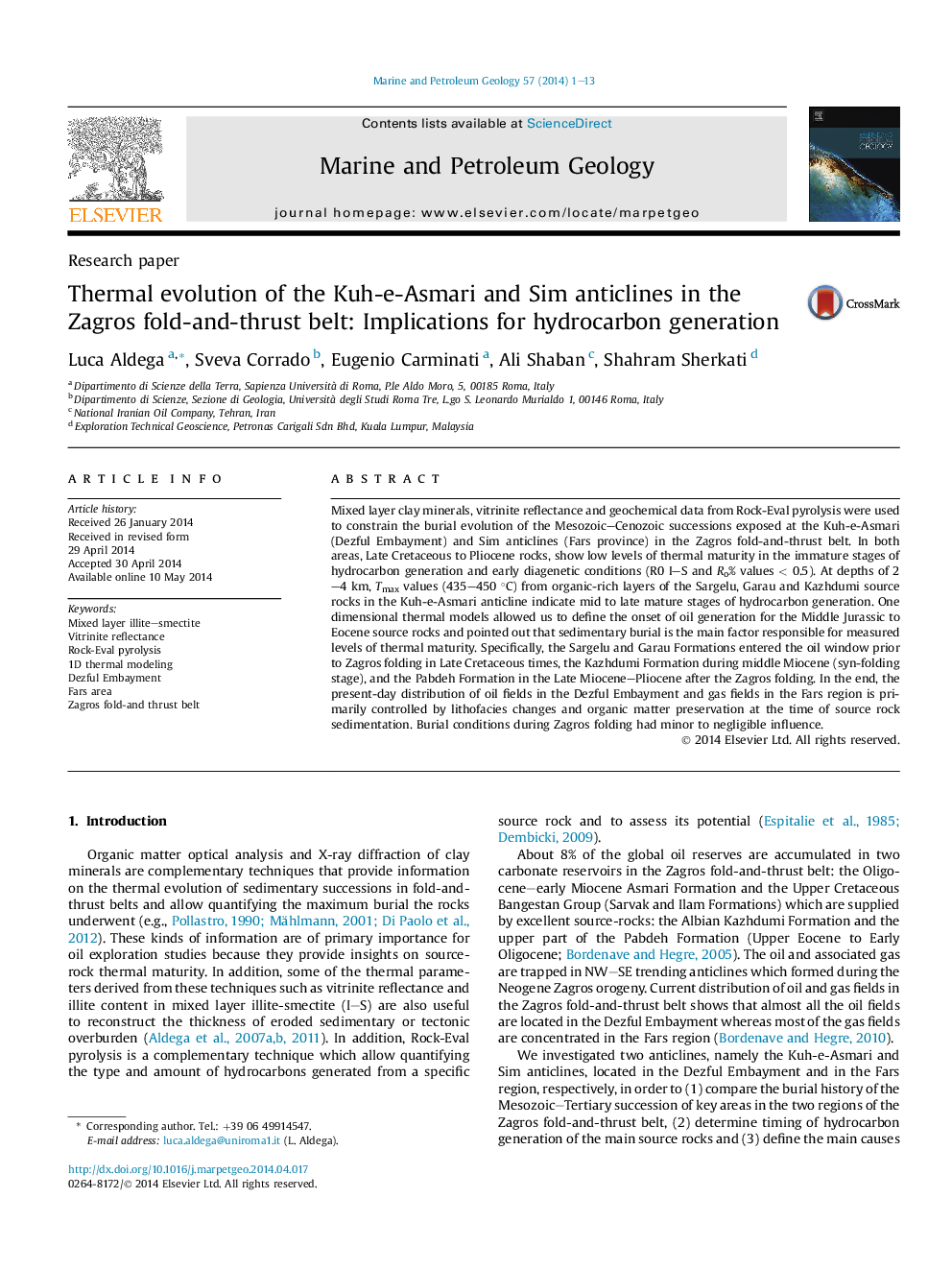| Article ID | Journal | Published Year | Pages | File Type |
|---|---|---|---|---|
| 6435329 | Marine and Petroleum Geology | 2014 | 13 Pages |
â¢Burial history of the Mesozoic-Cenozoic succession of the Zagros belt.â¢Timing of hydrocarbon generation and Zagros folding.â¢Factors controlling the present-day distribution of oil and gas fields in the Zagros.
Mixed layer clay minerals, vitrinite reflectance and geochemical data from Rock-Eval pyrolysis were used to constrain the burial evolution of the Mesozoic-Cenozoic successions exposed at the Kuh-e-Asmari (Dezful Embayment) and Sim anticlines (Fars province) in the Zagros fold-and-thrust belt. In both areas, Late Cretaceous to Pliocene rocks, show low levels of thermal maturity in the immature stages of hydrocarbon generation and early diagenetic conditions (R0 I-S and Ro% values < 0.5). At depths of 2-4 km, Tmax values (435-450 °C) from organic-rich layers of the Sargelu, Garau and Kazhdumi source rocks in the Kuh-e-Asmari anticline indicate mid to late mature stages of hydrocarbon generation. One dimensional thermal models allowed us to define the onset of oil generation for the Middle Jurassic to Eocene source rocks and pointed out that sedimentary burial is the main factor responsible for measured levels of thermal maturity. Specifically, the Sargelu and Garau Formations entered the oil window prior to Zagros folding in Late Cretaceous times, the Kazhdumi Formation during middle Miocene (syn-folding stage), and the Pabdeh Formation in the Late Miocene-Pliocene after the Zagros folding. In the end, the present-day distribution of oil fields in the Dezful Embayment and gas fields in the Fars region is primarily controlled by lithofacies changes and organic matter preservation at the time of source rock sedimentation. Burial conditions during Zagros folding had minor to negligible influence.
